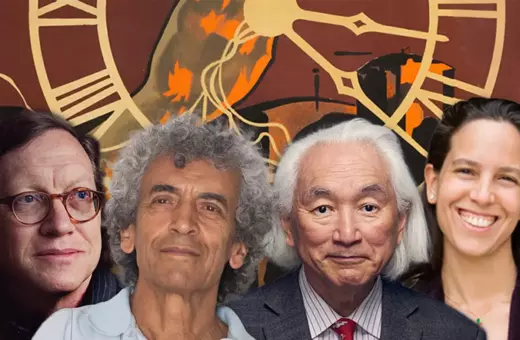The beauty in the universe that physicists seek and see is an illusory consequence of our human mathematics. The world is asymmetric and imperfect: it's time for an aesthetic revolution in physics, writes Marcelo Gleiser.
What is beauty? The poet John Keats, in his Ode on a Grecian Urn, responded with his enigmatic ‘“Beauty is truth, truth beauty,”—that is all/Ye know on earth, and all ye need to know.’ Although there isn’t agreement among scholars about the poet’s intentions in writing these lines, in scientific circles they came to signify a general epigraph for a Platonic take on Nature: that beauty, understood as mathematical symmetry and proportion, is the pathway to the truth, that is, to our final unveiling of Nature’s deepest secrets. I am here to argue against this belief—for it is a belief—from bottom up.
Let’s start with Plato. He distrusted the senses. To him, to base our understanding of the world on what our senses can capture of it is a sure path to delusion. To find truth we must dive into the world of ideas, of undistilled reason. In his famous Allegory of the Cave, he imagined a group of slaves chained and immobilized in such a way that all they could do since birth was to watch shadows dancing on the cave wall ahead of them. An Ancient Greece take on binging on movies. To these slaves, Plato argued, reality was what they saw on the wall, as that was the only facet of the world they had access to. They couldn’t know that a roaring fire burned behind them, and people held objects in front of it to project shadows on the cave wall. The slave’s reality was massive staging of fake news.
Plato used the allegory to push his point that the senses are deceitful, that what we see and perceive of the world is not the truth. Think of what happens after a few glasses of wine, how the world seems distorted. Plato’s move was to extract human fallibility from the act of observing. Only the purest reaches of reason can open the gates to trustworthy knowledge, what philosopher Thomas Nagel called the “God’s eye view.”
To many mathematicians (especially pure mathematicians), their job is more of a calling, a means to extract the beyond-human aspects of reality. Faithful to Pythagoras and Plato, the belief here is that the mathematical blueprint of reality can be slowly unveiled by the persistent application of deductive logic.
Theoretical physics uses mathematics to model the parts of the material world we can measure. There is no doubt that this can be done in spectacularly efficient ways, a project that started also in Ancient Greece and that continues today. We fly in airplanes, discover elementary particles of matter, take antibiotics and vaccines, find our positions with GPS watches, and decode the spectra of quasars billions of light-years away. We do this and much more because the laws of nature work.
The laws of nature tell us of quantities that remain the same in the face of change. In every natural process, the amount of total energy is always the same, to the precision of our instruments. The same is true for many other physical quantities such as the total electric charge. These “conservation laws” have a mathematical expression that reveals some sort of symmetry in the physical system. And something profound about how nature works.





















Join the conversation